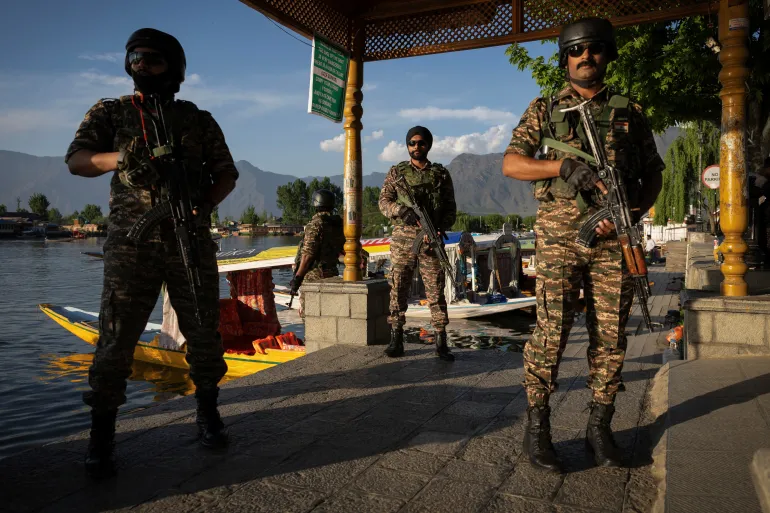In a bold and decisive military response, India launched “Operation Sindoor,” striking nine strategic sites across Pakistan and Pakistan-occupied Kashmir (PoK). This high-impact operation marks one of the most forceful actions taken by India in recent years against cross-border terrorism.
Triggered by the Pahalgam Terror Attack
The operation comes in direct response to the Pahalgam terrorist attack, a horrific incident in which 25 Indian citizens and one Nepali national were killed. The brutal attack, carried out by militants believed to have infiltrated from across the border, sent shockwaves across the nation and intensified calls for swift and decisive action.

According to Indian officials, the intelligence trail following the Pahalgam attack led to the identification of multiple terror launchpads and support facilities in Pakistan and PoK—locations that became the focus of Operation Sindoor.
Inside Operation Sindoor
The Indian military executed a coordinated missile and drone assault on nine high-value targets. These included terror camps, weapon storage sites, and command centers allegedly involved in planning and supporting cross-border infiltrations.

Defense sources confirmed that the strikes were precisely timed and intelligence-driven, minimizing collateral damage while maximizing impact. The operation was designed not just to avenge the Pahalgam attack, but to send a clear message that India will not tolerate terrorism emanating from across its borders.
The operation’s name, “Sindoor”—symbolic of sacred red powder in Indian culture—was chosen to reflect the nation’s resolve to protect its sovereignty, citizens, and honor.
Pakistan’s Reaction: Retaliation Vowed
Pakistan has strongly condemned the strikes. The Inter-Services Public Relations (ISPR) claimed that several missiles landed in civilian areas, a claim India has denied, asserting all targets were strictly military-related.
The Pakistani leadership has vowed to retaliate, with the Prime Minister warning that India’s actions “will not go unanswered.” Both countries have reportedly placed their militaries on heightened alert along the Line of Control (LoC).
Global Response and Diplomatic Tensions
The United Nations and key global powers including the United States, Russia, and China have expressed serious concerns about the rising tensions. International voices are calling for restraint and dialogue, warning that continued military escalation could lead to a broader regional conflict.
Analysts believe Operation Sindoor may mark a shift in India’s counter-terror doctrine, signaling a move from strategic restraint to a more proactive and offensive defense posture.
Historical Context
This is not the first time India has taken cross-border military action. The 2016 surgical strikes and the 2019 Balakot airstrikes were major turning points in India’s response to terrorism. However, Operation Sindoor stands out for its scale, precision, and immediate context following the Pahalgam massacre.
Conclusion
With nine strategic targets struck and tensions running high, Operation Sindoor has pushed India-Pakistan relations to a new crossroads. As Pakistan vows retaliation and the world watches closely, the aftermath of this operation could reshape security dynamics in South Asia.




